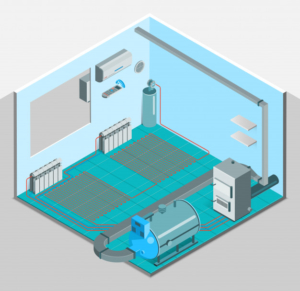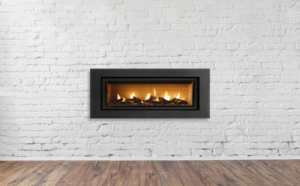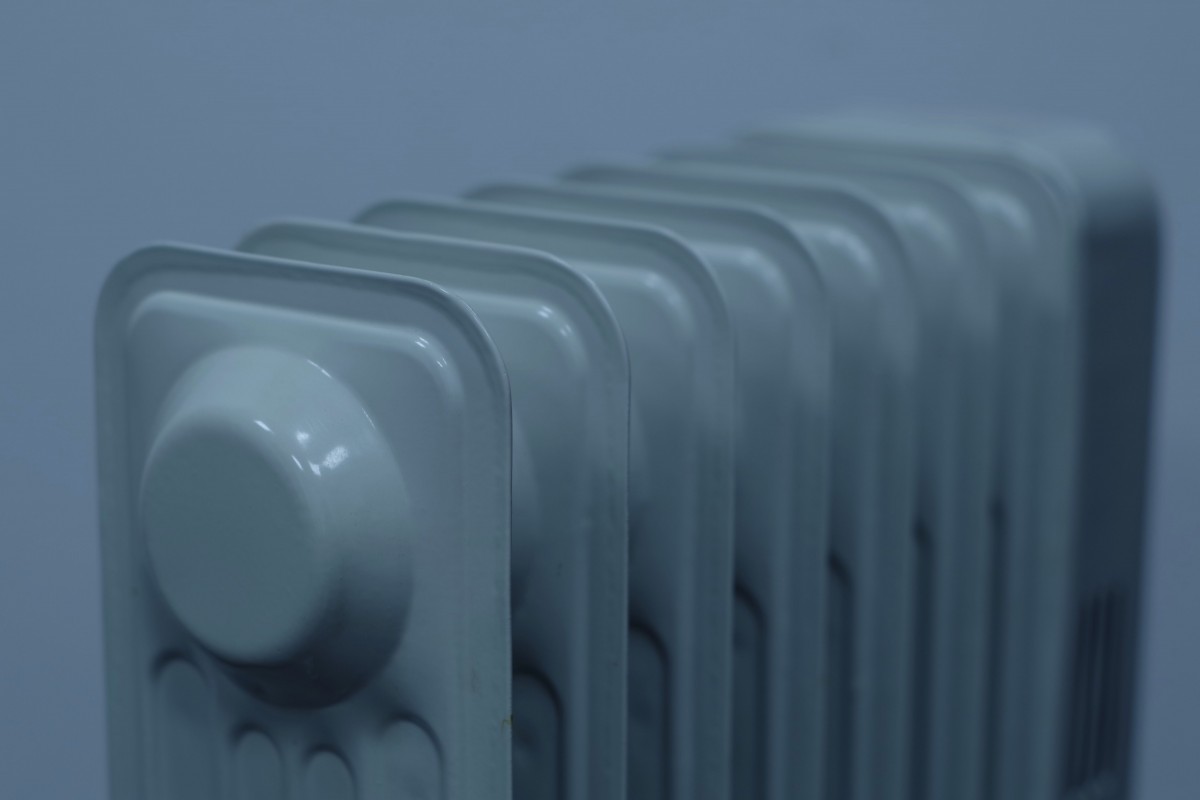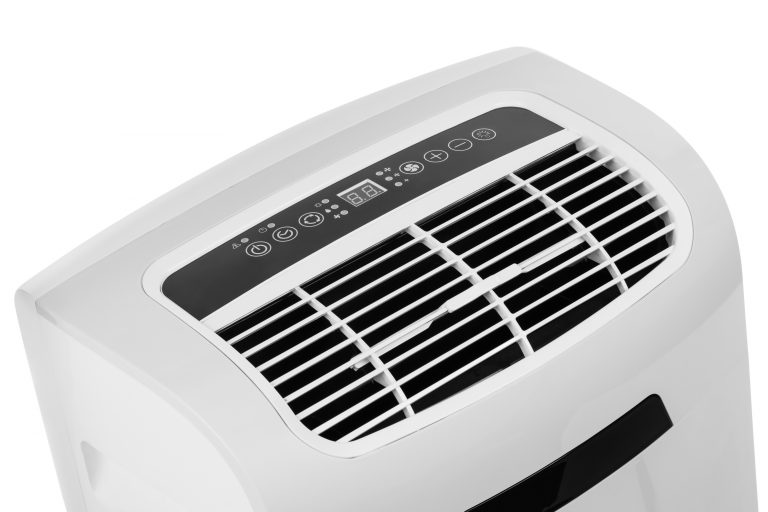Types of Home Heating Systems
Whenever the cold winter months roll over, people turn to their heating systems to keep themselves warm inside. Even outside the winter season, heating systems are an invaluable companion during that occasional cold evening.
Over the years, many different types of heating systems have found their way into homes. Ranging from the traditional fireplace to more advanced heating services, there’s more than one way to keep your hands and feet toasty. Here’s a rundown on the different types of home heating systems.
Furnace
A furnace or heat pump is an appliance that generates heat which is then pumped into vents for distribution throughout the building. Because they are capable of generating plenty of heat, they are most commonly found in large buildings and structures. They make great use of ventilation and are what keeps you warm in homes and diners. The most common fuel source of your average furnace is natural gas. Many modern furnaces use electricity to generate heat.
Furnaces are categorized based on their complexity and overall design. When based on complexity, furnaces can be classified into single-stage, two-stage, or modulating furnaces.
Single furnaces are the simplest of the three, with only an on or off option, generating a certain amount of heat.
Two-stage furnaces, on the other hand, can be run at two different speeds, depending on what’s needed. They are known to be generally quieter than their single-stage counterparts.
Finally, modulating furnaces, as the name suggests, allow for temperature modulation depending on the needed temperature. These are best for conserving energy as they only use as much energy as needed.
Furnaces can also be classified based on the design implemented. The most common furnace designs are condensed, forced-air, forced draft, and natural draft. Each design has its own pros and cons depending on how it is used.
The first furnace design came to be known as the natural draft. They relied on atmospheric pressure and, as the name suggests, natural drafts, to function. Made out of brick or steel, these furnaces used wood or coal as a fuel source.
Forced-air furnaces were implemented back in the 1950s and 1960s. They were made to replace natural-draft furnaces. It made use of blowers to redirect the heated air. Though they were essentially an improvement from the natural draft design, they still only achieved up to 60% AFUE, or annual fuel utilization efficiency.
Forced draft furnaces were more efficient than forced-air furnaces and used a variable speed blower to manage the heat. One major difference between forced-air and forced draft furnaces was that forced draft furnaces were a lot more compact in terms of design compared to the clunky build of forced-air furnaces.
Condensed furnaces are also known as high-efficiency furnaces. The condensed design of the furnace uses natural condensation within the system to achieve upwards of 98% efficiency. They mainly make use of natural gas and are a cost-effective heating solution for many people.
Many buildings that use furnaces have them placed in a dedicated furnace room. As the room would reach extreme temperatures, sufficient ventilation was a must. Furnace repair or installation must always be handled by a professional due to the volatile nature of furnaces.
Gas and oil fired-boilers
Gas and oil fired-boilers are similar to furnaces, though they use oil and natural gas instead of electricity. Gas boilers are more common than their oil counterparts, though you will find more gas boilers in areas where natural gas isn’t as common. Gas and oil fired-boilers are cheap to run but are slowly phasing out in favor of more modern and sustainable methods.
Boilers differ from furnaces in the sense that boilers are used to describe heating systems that involve liquid. This is why furnaces are more heavily associated with coal and wood.
Heat Pumps Systems
A heat pump system provides moderate heating solutions more efficiently than other systems. Instead of generating their own heat through electricity or some type of fuel, heat pumps instead take heat from one place and release it in another. This system is more common than you think, as it is used in refrigerators to keep your food cool. This is why the back of the fridge is warmer than anywhere else, as the heat dissipates through there.
While heat pumps are most commonly used to provide moderate cooling in buildings and homes, it can also be used the other way around to draw heat and bring it inside. This process is also more energy-efficient and can save quite a bit of money.
A common heating system found in many homes is the reversible heat pump. As the name suggests, the reversible heat pump allows the user to change the direction in which the system takes in and releases heat. During hot weather, the heat pump can supply cool air indoors, whereas, during cold evenings, it can draw heat and pump it inside.
Because of the energy efficiency that heat pumps provide, they are not only more environmentally friendly but also economically friendly. This makes them a popular heating system choice for many homes. The only main issues with heat pumps in modern homes are the difficulty in installing one, as well as the high upfront costs that come with it.
Space Heaters
Space heaters are the perfect heating solution for small rooms. They provide a centralized heat source as opposed to heating through ventilation. Depending on the design, space heaters are also portable, and as such are useful to bring around when needed.
There are two main types of space heaters based on the design used. These two types are convection heaters and radiant heaters. Convective heaters use convective heat to warm a person, whereas radiant heaters rely on infrared radiation to do the job
Convective heaters are closer to your conventional heat pump or furnace in the sense that they generate convective heat. This type of heat can dissipate quickly, and as such is most effective in rooms where insulation prevents or delays the loss of heat.
Convective heaters can either come with or without a fan. Fan heaters make use of ceramic or metal as the heat source, and thanks to the fan, can heat up a room pretty quickly. On the other hand, heaters without fans make use of oil or water to dissipate the heat – though they do take longer for the heat to spread, they also generate heat for longer after they’re turned off.
Radiant heaters are better for areas where insulation is poor, or even outdoors. They make use of infrared radiation, which heats the skin and clothing directly, as opposed to convective heaters, which heat up the air around it. This means that you can be a considerable distance away from the radiant heater and still feel warm. Some of the oldest radiant heater designs used nichrome and ceramic, though more modern radiant heaters use quartz tubings.
Space heaters can be classified into two different categories based on the fuel source – gas and electricity.
Gas-fired Space Heaters
Gas-fired space heaters, as the name implies, run by making use of natural gas. This is still a relatively common type of heater, considering how affordable natural gas is. It also helps that since natural gas is portable, gas-fired space heaters can be used in areas with no electricity. You will more likely find gas-fired space heaters in rural areas.
Electric Space Heaters
Electric space heaters are the more modern alternative to gas-fired space heaters. They have the advantage of being easy to power as long as an outlet is nearby. It also can be used without natural gas, making it safer for homes.
The main downside to electric space heaters is that they are unusable during power outages or in areas with no electricity, though there are a few workarounds. Some electric space heaters come with their own built-in batteries, allowing for temporary warmth. You can also buy a separate portable battery to power it if it doesn’t come with a built-in battery.
Fireplaces
Fireplaces have been around since the dawn of man. As one of the original heating systems, it’s no surprise that fireplaces are still used to this day to warm homes. The most popular type of fireplace, at least in the media, is no doubt the firewood fireplace, though there are many other types of fuels that are used. Two such popular alternatives are electric and gas fireplaces.
Electric Fireplaces
Electric fireplaces are the modern replacement of the traditional firewood and coal fireplaces. The fireplace uses electricity to generate heat similar to an electric space heater. You’ll notice that many electric fireplaces come with “wood” or “logs” on top of them, but they are nothing more than imitations to provide a more traditional feel to the design.
The main advantage that electric fireplaces have over their firewood counterparts is that they do not require any chimney to function. No smoke is generated from the electric fireplace, so you don’t need to build an entire chimney around it. It is also easier and safer to use due to its plug-in nature. The only downsides to electric fireplaces are that they are more costly to run than firewood fireplaces, and as with electric space heaters, they cannot be used without electricity.
Gas Fireplaces
Gas fireplaces are a little closer to firewood fireplaces. While they don’t require a chimney just like electric fireplaces, they do generate an actual “fire” that’s created by the gas fed into it. The fire isn’t as loud or volatile as a log or firewood fire, though, and many gas fireplaces are enclosed in a sheet of glass. They are a useful alternative to electric fireplaces, especially if you expect to frequently use them, due to them being cheaper to run.
Radiant Floor Heating
Radiant floor heating is one of the most advanced heating systems on this list, and for good reason. It makes use of modern compact heating systems to provide warmth in a building. They are also highly configurable and can connect to most modern devices for instant adjustment.
Radiant floor heating can be classified into two different types depending on what system is used. The most common system is the hydronic one, which makes liquids, though the electric system has also seen quite a bit of use.
The hydronic system utilizes two different liquids – water and antifreeze. Many types of antifreeze are used, though propylene glycol is commonly used. These two liquids are run through the underfloor pipings alternatively in a closed-loop, and make trips from the boiler to the floor and vice-versa.
The pipes used below the floor are typically made out of a plastic such as polyethylene. However, there are still some hydroponic systems that use steel or copper pipes instead of plastic for the liquids.
On the other hand, electric systems use electric energy to generate heat instead of relying on liquids. This system utilizes time-of-use electricity metering and is generally easier to set up compared to hydronic systems.
The main advantage of radiant heating is that heat is distributed evenly. Since every square foot of the floor is covered by the system, there won’t be any “cold spots” anywhere. It also provides more space for other design choices, since the heating distribution happens below the floor.
Many modern radiant floor heating systems also have the advantage of being smart-capable. With a WiFi connection, you can set the temperature of the system from anywhere in the house with any phone, tablet, or laptop. You can even set the temperature for guests while you’re away from home.
The main downside of radiant floor heating is that it is expensive to set up and install due to its delicate nature. It can also be difficult to set up in an already-built home, as you would have to break and rebuild the entire floor to do so. And because of the system still taking up space, you may find that the floor’s height will increase by quite a bit after installation – that is, of course, unless you’ve planned around this beforehand.
Business Name – Elite Plumbing, Heating & Air Conditioning
Address: 3085 E Post Rd, Las Vegas, NV 89120, United States
Phone Number: 702-263-2665
SCHEDULE YOUR FREE ESTIMATE
We Provide Expert Air Conditioning Services in Las Vegas, NV







